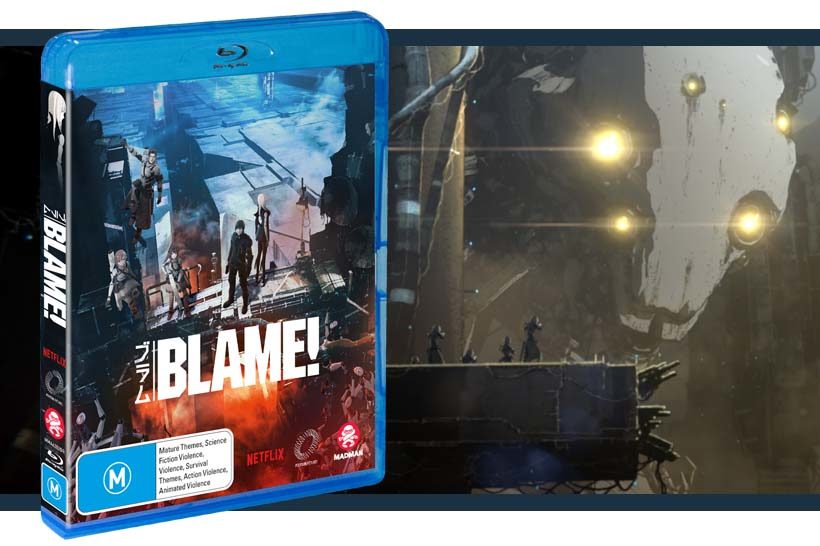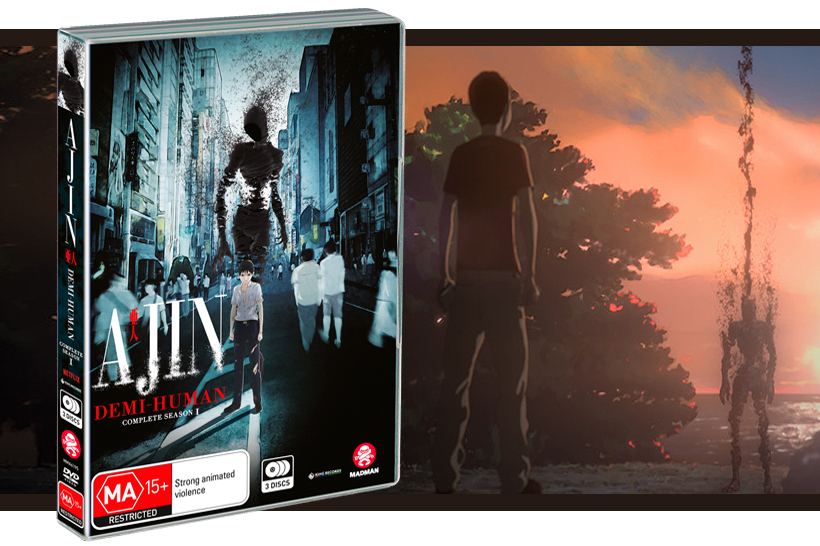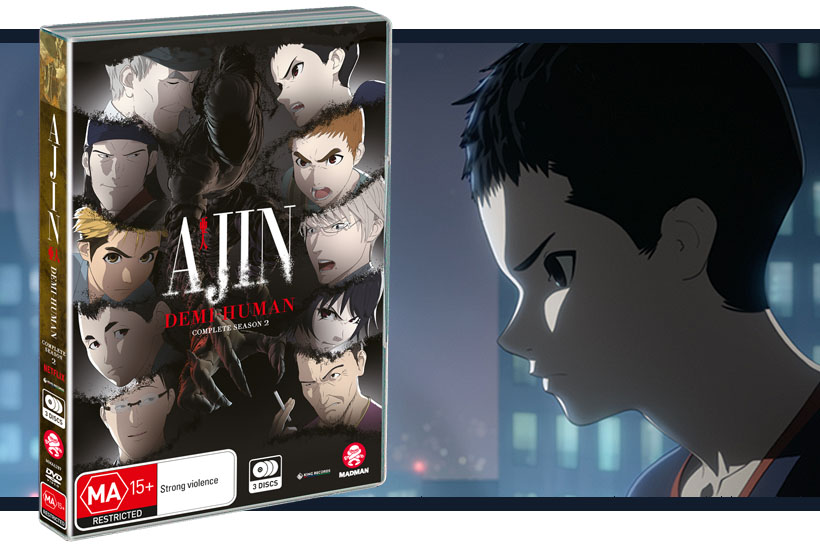The Electrofishers are a group of human scavengers surviving in the City, a place that used to cater to its denizen’s every need, but now views humans as a threat to be purged. The Electrofishers must fight to survive each day, contending with their dangerous environment, the threat of starvation, and the Safeguards – a deadly defence system which will stop at nothing to kill them if they are found. With supplies in their village dwindling, the young Zuru and a group of other Electrofishers are desperately searching for food when they come across Killy, a wanderer looking for a human that possesses the Net Terminal Gene. Although Killy seems initially uninterested in the group and not particularly eager to explain his motives, Zuru convinces him to return to the Electrofisher base so she and her village can help him locate the Net Terminal Gene. While none of the villagers possess the Net Terminal Gene, the appearance of Killy leads to the discovery of Cibo, the rotting machine-corpse of a scientist from before the threat of the Safeguard, who reveals where the Electrofishers can find food. Together with Killy and Cibo, the Electrofishers set out to locate the supplies that could save their village from the brink of starvation, all while trying to remain undetected by the Safeguards.

Blame! is a Netflix original film based on the sci-fi (with a dash of horror) manga series of the same name by Tsutomu Nihei. I haven’t read the original manga, but a rudimentary search makes it seem like a unique series instilled with a healthy dose of dread in its exploration of cyberpunk, with simultaneously gorgeous and dreadful art that illustrates its dystopian aspects. My understanding of how they’ve translated the manga into the film is that the meatier and more compelling story elements of the 10-volume manga were streamlined into a one hour forty-five-minute film. The result is a production that feels a lot like an OVA for a show I haven’t watched – a short glimpse into a much bigger story with impressive art direction but filled with a whole load of exposition that lacks meaningful context and characters whose narratives were already explored in previous content.

Blame! starts in the thick of things with Zuru and her group scavenging for supplies, clearly communicating the danger of their world in the opening scenes when they are attacked by a pack of Safeguards. The art direction, as well as the sweeping shots of the background, do a lot to set up the kind of world Blame! is set in and these moments with very little dialogue communicated the tone and history of the film’s setting wonderfully. Unfortunately, the characters weren’t as interesting or as nuanced as the backgrounds. Zuru is not particularly engaging, in the ‘making of’ extra on the Blu-Ray the character designer refers to her main characteristics as “hopeful” and “cute” and the film doesn’t really give her much else to work with. Killy is your usual silent, mysterious, male anime protagonist who is at his most interesting when Cibo is interacting with him. If my rudimentary research is correct, the original manga focuses much more on Killy and Cibo as partners traveling the dystopian landscape, which is something I would have enjoyed more in retrospect as this film tells the story of them meeting and implies a greater connection but doesn’t really have enough time to flesh this relationship out in any meaningful way.

Another comment from the ‘making of’ extra was that the Blame! manga was hard core sci-fi and that the film needed to be turned into “entry-level” sci-fi to appeal to a wider audience. It seems “entry-level” in this context means ignoring the tension created by the effective horror imagery from the manga and turning any sort of conflict into a major shoot out. The parts of Blame! that were most enjoyable for me were the visuals, designs (especially the backgrounds and Electrofisher gear), and the horror elements. Although the film is labelled as a thriller, I feel like it could have been better utilised as a horror – the setting was appropriately creepy and dystopian, with some really great enemy designs that would definitely be considered someone’s nightmare fuel. But Blame! is more interested in being an action film that creates tension and then deflates it in a hail of bullets and laser fire. Given that the film was a Netflix original, it seems like they missed an opportunity to create something unique based on the source material, and instead aimed for something that was more accessible and was ultimately kind of dull.

Blame! has the unfortunate luck of being unintentionally funny. Killy is stoic to the point of hilarity at times, and the English dub suffers from plenty of odd dialogue pauses thanks to voice actors trying to work around the lip flap movements of the animated characters. This leads to some hilarious line deliveries, my personal favourite being “what about THE (pause for five seconds) FOod!?” Other than the fun times from the voice work, the ‘making of’ extra is also interesting and features some insights from the film through interviews with the creators. The most interesting interviews discuss the methods the creators used to design the environments and sets in the film, as well as some interesting comments from the character designer and graphic designer. Nothing too major but definitely some interesting titbits.

When discussing the making of Blame! the character designer mentioned that the author of the manga asked for the designs to suit a more modern anime visual style to encourage people to watch the film. This approach embodies the overall feel of the film, and it’s really noticeable. Characters have a modern visually style, but they lack depth and are uninteresting, the sci-fi is somewhat accessible but still suffers from the tell-tale needlessly complex explanatory dialogue. Given how interesting the source material is, perhaps it would have been better to create something more challenging and not be so concerned with what was modern and accessible. At least an adaptation of something unique and challenging would have been memorable beyond the visuals.
A review copy was provided by Madman Entertainment to the author for the purpose of this review.
© Tsutomu Nihei, KODANSHA/BLAME! Production Committee





